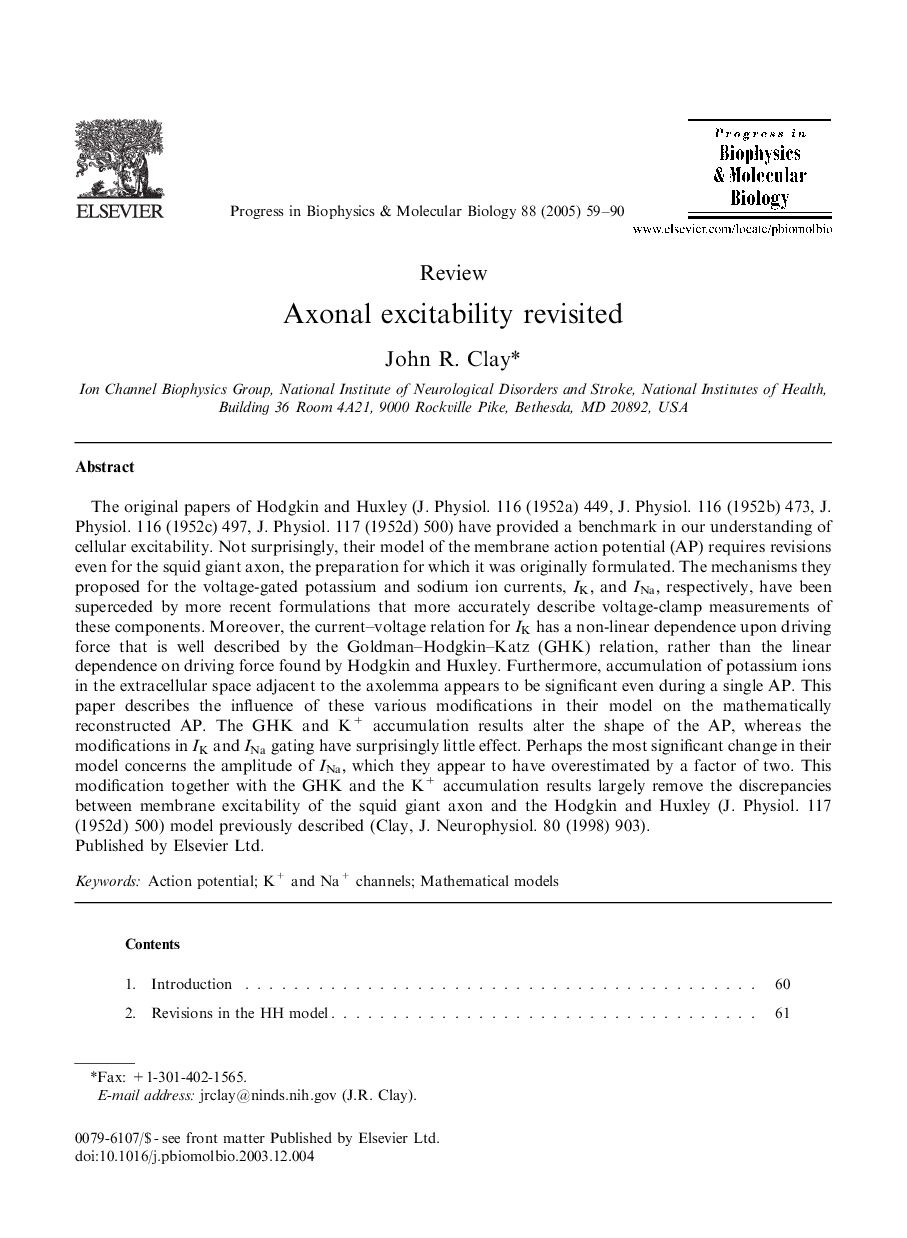| Article ID | Journal | Published Year | Pages | File Type |
|---|---|---|---|---|
| 10883655 | Progress in Biophysics and Molecular Biology | 2005 | 32 Pages |
Abstract
The original papers of Hodgkin and Huxley (J. Physiol. 116 (1952a) 449, J. Physiol. 116 (1952b) 473, J. Physiol. 116 (1952c) 497, J. Physiol. 117 (1952d) 500) have provided a benchmark in our understanding of cellular excitability. Not surprisingly, their model of the membrane action potential (AP) requires revisions even for the squid giant axon, the preparation for which it was originally formulated. The mechanisms they proposed for the voltage-gated potassium and sodium ion currents, IK, and INa, respectively, have been superceded by more recent formulations that more accurately describe voltage-clamp measurements of these components. Moreover, the current-voltage relation for IK has a non-linear dependence upon driving force that is well described by the Goldman-Hodgkin-Katz (GHK) relation, rather than the linear dependence on driving force found by Hodgkin and Huxley. Furthermore, accumulation of potassium ions in the extracellular space adjacent to the axolemma appears to be significant even during a single AP. This paper describes the influence of these various modifications in their model on the mathematically reconstructed AP. The GHK and K+ accumulation results alter the shape of the AP, whereas the modifications in IK and INa gating have surprisingly little effect. Perhaps the most significant change in their model concerns the amplitude of INa, which they appear to have overestimated by a factor of two. This modification together with the GHK and the K+ accumulation results largely remove the discrepancies between membrane excitability of the squid giant axon and the Hodgkin and Huxley (J. Physiol. 117 (1952d) 500) model previously described (Clay, J. Neurophysiol. 80 (1998) 903).
Keywords
Related Topics
Life Sciences
Biochemistry, Genetics and Molecular Biology
Biophysics
Authors
John R. Clay,
